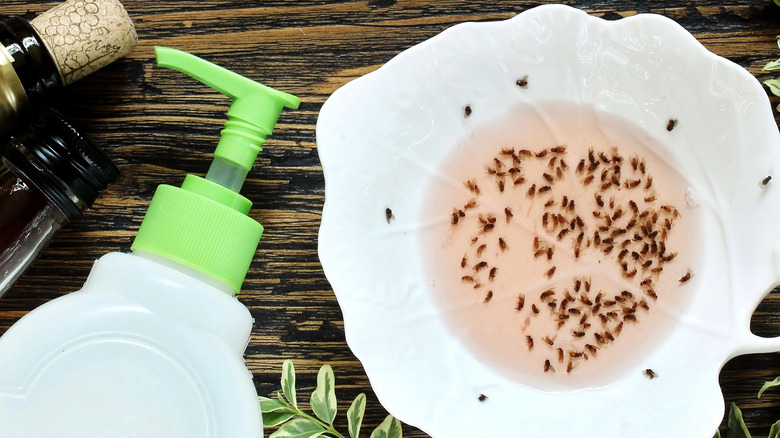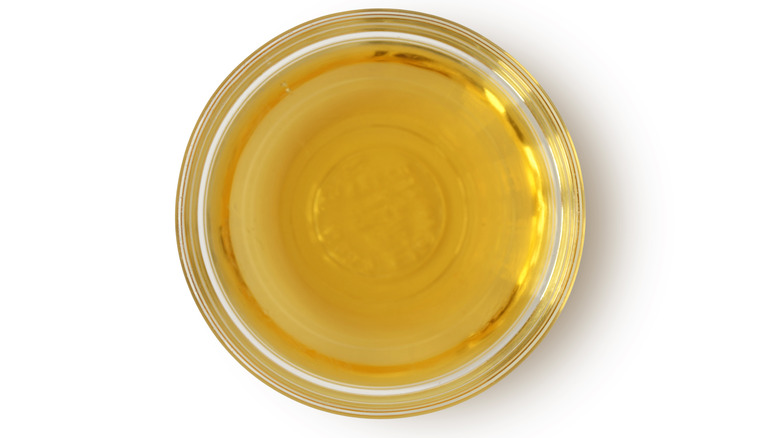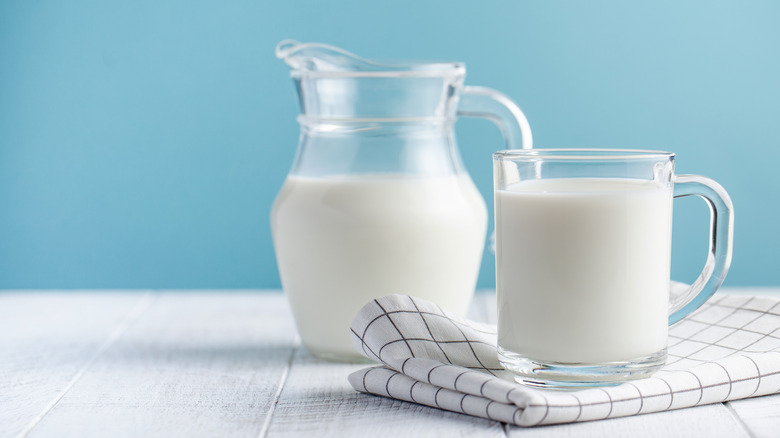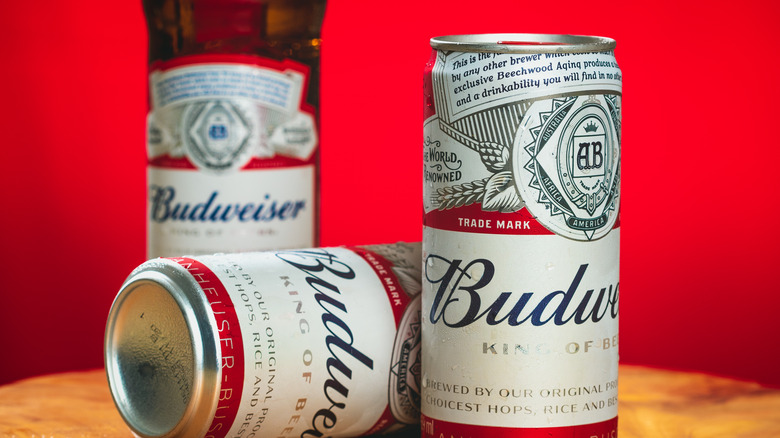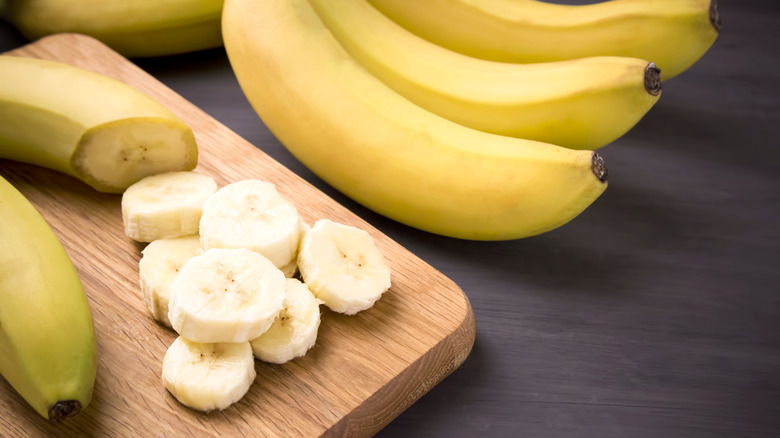5 Best DIY Fruit Fly Traps You Need To Try
Eating outdoors is one of life's greatest pleasures. Doesn't corn on the cob with butter dripping down its kernels taste so much better when you're outside, basking in the sun? But hey, what's up with all of these flies? Great, one just ran across your BBQ chicken, and a few have already swarmed the watermelon slices.
At some point in life, we all must spar with the humble fruit fly. These little buzzers are everywhere, seemingly all year round. While a can of bug spray is effective in thinning their numbers, the large amount of chemicals and toxins such as DEET and cyfluthrin in the spray (via MadeSafe) may not be the best thing to spraying so haphazardly while you try to eat.
Let's say you want to try a more natural approach to getting rid of flies. How can you make a fly trap that is not only effective but also safe and cheap? Here are 5 possible solutions to your pest problems.
Apple cider vinegar is a natural lure
Have you ever left a can of Coke out on your patio outside overnight only to discover that it's now crawling with bees? Everything from bees to ants to, yes, even fruit flies have a taste for the sweet stuff. Fruit flies have specialized receptors that allow them to detect sugars (via ScienceDaily). Perhaps the fruit fly's sweet tooth — or receptor, in this case — can be used against it.
As The Spruce Eats explains, all you need to do is first fill a jar or small-necked bottle with apple cider vinegar. While drinking apple cider vinegar may be good for humans, it's probably not for these little bugs. On top of the vinegar, add a few drops of dish soap. However, it's important to not mix the soap and vinegar together; instead, let the dish soap form a layer on top of the vinegar. Then, set the jar in an area of your home that has the most fly traffic.
The flies, detecting the vinegar, will fly over into the jar or bottle to feast on it. When they do so, the dish soap surface will bog them down, keeping them trapped. The only thing you'll have to do is simply empty the jar of vinegar, soap, and flies.
Use rotten fruit to lure them in
Wait a second, you might be saying: Doesn't rotten fruit attract fruit flies? We don't want to leave rotten apples all over the house to try and catch them. But just like you need cheese to lure the rat into the cage, you need to tempt the fly first if you truly want to catch it.
Wide Open Eats suggests that you acquire a mason jar, any piece of overripe or rotten fruit, some plastic wrap, and a toothpick. Place the rotten fruit at the bottom of the jar and then cover the mouth of the jar with the plastic wrap. Take the toothpick and poke several holes across the top of the wrap. This will allow the scent of the fruit to entice fruit flies to enter the jar, with the plastic wrap preventing most, if not all, of them from escaping. If you so desire, you can then take the jar full of flies and empty it outside to allow the flies to escape away from your home.
This process also works with a piece of fruit and a wide plastic sandwich bag, but one should be more careful when using this method, as flies may be able to escape from the mouth of the bag.
Use warm milk to make a trap
While using milk as a trap may suggest leaving spoiled milk out in the hopes some eager fly swan dives into it, the truth is that you really don't need any spoiled milk at all. All you really need is ½ cup or so of milk, some black pepper, some sugar, and your choice of dish soap.
Taste of Home explains that, similarly to the vinegar trap, this one uses dish soap to trap unsuspecting flies. First, combine the ½ cup of milk and sugar together before heating the mixture on your stovetop or in the microwave. You may need to stir it occasionally to help the sugar dissolve to make that sweet nectar-like bait. Then, add a few drops of dish soap, although, unlike the vinegar trap, you should stir the soap into the milk to give the surface that sticky sheen. All that's left is to sprinkle some black pepper on top and then set the trap in your area of choice.
The milk trap, however, was deemed to be the "most frustrating" by Taste of Home, as it was hard to tell whether the specks were flies or simply bits of black pepper. Taste of Home also notes that only three flies were caught during the amount of time the trap was left out. Perhaps this is a trap best suited for if you have only a few little buggers flying around rather than a noticeable infestation.
Use alcohol to give flies a 'buzz'
There's something about summer that makes a cold beer or a glass of wine all the more intoxicating. While some people are known for enjoying more than a few brews at a summer pool party, perhaps using some spirits can help take care of a few of those pests buzzing around your kitchen.
How exactly can beer and wine attract fruit flies? According to Wired, the yeast in beer is a natural lure for fruit flies, as the smell of yeast is similar to that of ripening fruit. In fact, Science has even credited fruit flies for helping to create the unique taste in beer thanks to a unique symbiotic relationship between single-celled organisms and fruit flies. In the case of wine, the scent of crushed fruit and sugars in a glass of wine help attract fruit flies to your drink, the same way pieces of fruit attract flies.
To create a trap, according to Curbly, all you need is a mason jar with a metal lid, a hammer, nails, and your choice of beer or wine. Fill the jar with beer or wine and then screw the lid on. Using the hammer and nails, pound some holes in the lid just as you would with the rotten fruit trap. The smell of the yeast in the beer and fermented fruit will bring the flies in and the lid will ensure they'll be locked inside.
How to make a humane fly trap
While all of these traps ensure that your unwanted guests are handled, there are some who may not have it in them to hurt a fly. This is an understandable predicament, but how exactly can one make a trap that's both safe for flies and gets them out of your house?
According to one Quora user and beekeeper, the way to catch flies humanely involves a large plate, a large bowl big enough that the plate can cover it, and a peeled banana. Place the banana in the bowl, removing all other fruit from the area so the banana is the only fruit in sight. Wait for the flies to gather on the banana and then quickly cover the bowl with the plate. You can then take the bowl outside, shaking it gently to get the flies to buzz off.
Some, however, justify killing a fly by noting that they live for only a very short time span — 30 to 50 days, according to Jennifer Gaeng of A-Z Animals. But if you can't bring yourself to hurt one of the world's smallest creatures, even one that likes to annoy you, it's best to try this tip.
